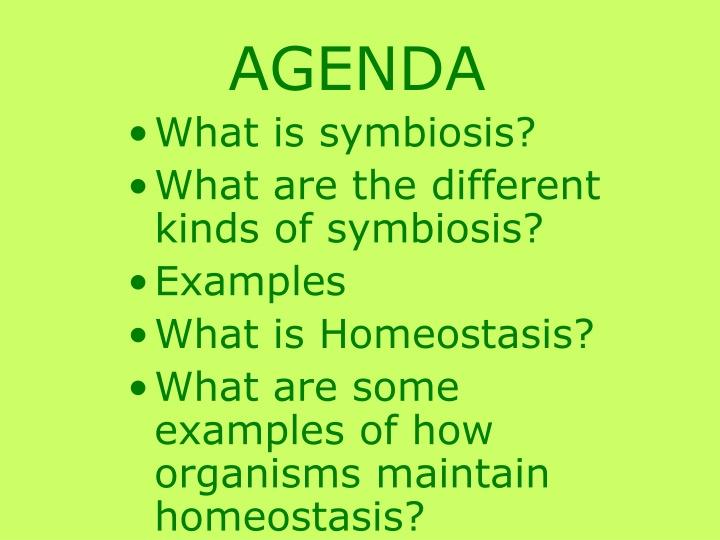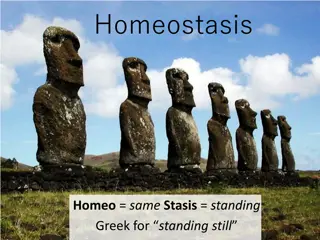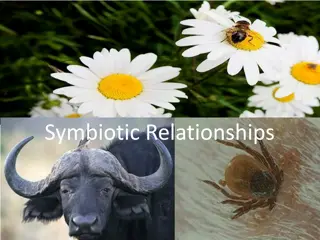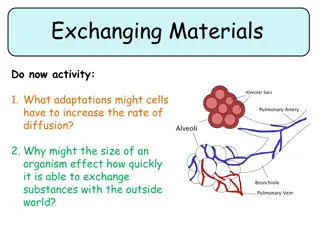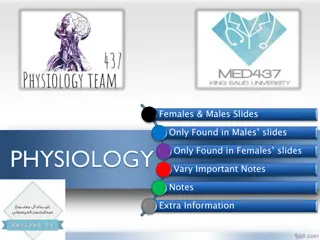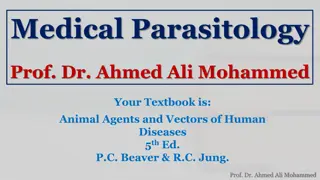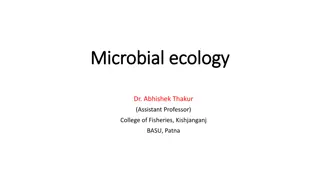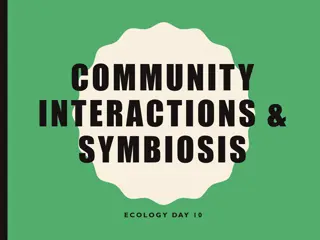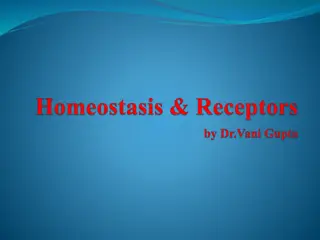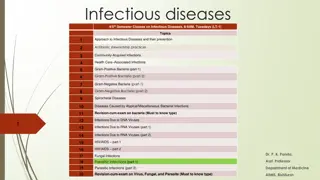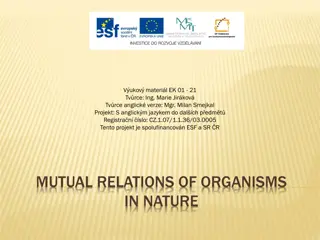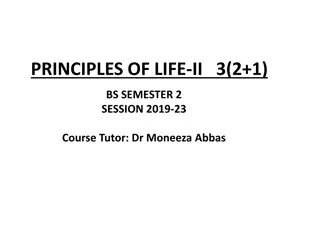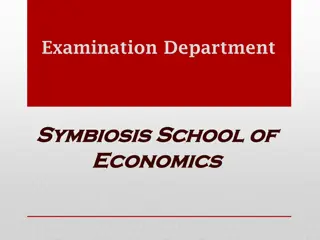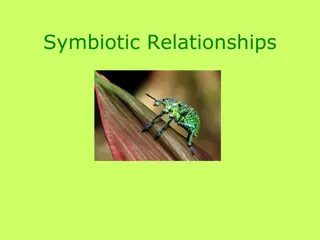Symbiosis and Homeostasis: Understanding Organisms' Relationships
Symbiosis refers to the act of organisms living together, showcasing mutualism, commensalism, and parasitism. Examples like Acacia plants with ants demonstrate these relationships. On the other hand, homeostasis involves maintaining a stable internal environment, crucial for organism survival. Instances such as cattle with cattle egrets highlight how organisms achieve balance. Exploring symbiotic interactions and homeostasis mechanisms provides insights into the intricacies of nature's harmony.
Download Presentation

Please find below an Image/Link to download the presentation.
The content on the website is provided AS IS for your information and personal use only. It may not be sold, licensed, or shared on other websites without obtaining consent from the author.If you encounter any issues during the download, it is possible that the publisher has removed the file from their server.
You are allowed to download the files provided on this website for personal or commercial use, subject to the condition that they are used lawfully. All files are the property of their respective owners.
The content on the website is provided AS IS for your information and personal use only. It may not be sold, licensed, or shared on other websites without obtaining consent from the author.
E N D
Presentation Transcript
AGENDA What is symbiosis? What are the different kinds of symbiosis? Examples What is Homeostasis? What are some examples of how organisms maintain homeostasis?
What is symbiosis? Literal definition: the act of living together What it means: Two organisms that live together Temporarily or for a longer time At least one of the organisms
What are the different kinds of symbiosis? Mutualism both organisms benefit Commensal ism one organism benefits one organism is unaffecte Parasitis m one organism benefits one organism is harmed
Example 1: Acacia plant with ant galls Ants lay eggs on acacia tree Acacia covers the infected area with brown flesh (gall) Parasitism: one benefits, one is harmed
Example 2: Moray Eel with Cleaner Fish Moray Eel gets a clean mouth Cleaner Fish gets a meal Mutualism: both benefit
Example 3: Cattle with cattle egrets Cattle stir up insects as they eat grass Egrets hang around and eat insects Commensalism: one benefits, one is unaffected
Example 4: Clown fish with anemone Clown fish gets protection Anemone is unaffected Commensalism: one benefits, one is unaffected
Example 5: Antelope with Oxbird Antelop e gets rid of parasite s Oxbird gets a meal Mutualism: both benefit
Example 6: Taenia worm in human eye Worm infects human blood stream Human may go blind Parasitism: one benefits, one is harmed
Homeostasis Maintaining a stable internal environment.
Examples of Homeostasis The thickening of fur in winter The darkening of skin in sunlight The seeking of shade in heat, The production of more red blood cells at high altitude. A dog panting to release body heat.
More examples The regulation of the amounts of water and minerals in the body. This is known as osmoregulation. This happens in the kidneys. Cold-blooded animals lying in the sun to warm up. The removal of metabolic waste. This is known as excretion. This is done by the excretory organs such as the kidneys and lungs.
Even More Examples The regulation of body temperature. This is mainly done by the skin. The regulation of blood glucose level. This is mainly done by the liver and the insulin secreted by the pancreas.
This powerpoint was kindly donated to www.worldofteaching.com http://www.worldofteaching.com is home to over a thousand powerpoints submitted by teachers. This is a completely free site and requires no registration. Please visit and I hope it will help in your teaching.
